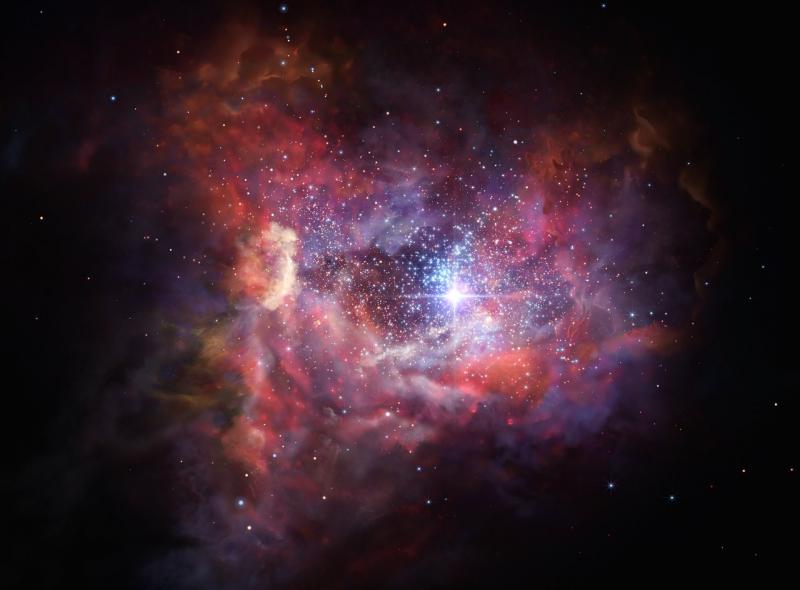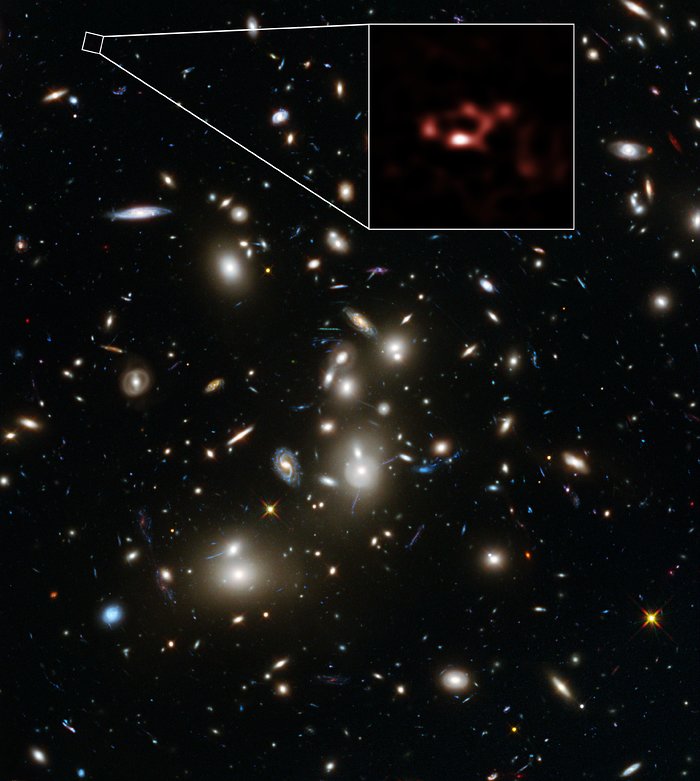New clues about the appearance of the first stars in the Universe
When and how did the first stars appear in the Universe and how did the galaxies form? Astronomers try to answer these questions by directly observing the childhood of the Universe. By building more and more gigantic telescopes, they manage to observe galaxies that lie always farther away and therefore are more distant in the past. An international team of astronomers, involving researchers from the Institut de Recherche en Astrophysique et Planétologie (IRAP – CNRS / CNES / UT3 Paul Sabatier) and led by Nicolas Laporte, University College London, has taken full advantage of the power of the ALMA radio observatory that has just been completed in Chile to study the chemical composition and properties of one of the most distant galaxies. These results are published in the Astrophysical Journal Letters.

The construction of the large ALMA observatory at an altitude of 5000m on a plateau in the Atacama Desert in Chile was largely motivated by the study of the formation of the first galaxies. Today, five years after its commissioning, the detection of dust and oxygen in a primordial galaxy confirms the extraordinary power of this instrument and opens new scientific perspectives.
As its light took more than 13 billion years to reach us, this galaxy is observed as it was 600 million years after the Big Bang, when the Universe was 4% of its present age. Radio wave observations with ALMA, combined with other observations in the visible and near-infrared range with another large telescope from Chile, the Very Large Telescope (VLT) of ESO, have made it possible to detect for the first time the presence of stardust in the young Universe. These observations shed new light on the end of life of the first stars, their supernova explosions and the ejection of matter in the form of dust grains.
Stardust has already been detected in several regions of space and is in the form of grains with a diameter of about one millionth of a centimetre. These grains emit radiation at radio frequencies to which ALMA is very sensitive. The detection of dust in the early Universe allows us to learn a little more about the life cycle of the first stars, in particular the time when the light emitted by the first hot stars filled the entire Universe.
The team of astronomers carried out a research program with ALMA in July 2016, focusing on a very massive cluster of galaxies referenced as Abell 2744. Various observations, including the detection of oxygen with the ALMA interferometer, showed the incredible distance of one of the galaxies catalogued A2722_YD4. Astronomers were able to estimate that it contained about 2 billion Sun-like stars, and an amount of dust with a mass equivalent to 6 million Suns. To explain this amount of stardust, researchers cite continuous explosions of supernovae over a period of nearly 200 million years. The authors have thus just opened a new window on the study of the first stars, and thus come closer to the Holy Grail of modern astronomy: the appearance of light in the Universe.
“A2744_YD4 is not only the most distant object detected by ALMA,” says Nicolas Laporte, lead author of this study, “the detection of stardust in the very young Universe indicates that supernovae have already occurred in the infancy of this galaxy.
Frédéric Boone, astronomer at IRAP, adds that “although the ALMA observatory was built to capture dust emission at the edge of the Universe, the presence of dust in the early galaxies remained uncertain. This result today confirms that ALMA opens a new window to probe the first galaxies and promises new advances in this field”.

Further Resources
- Publication : DUST IN THE REIONIZATION ERA: ALMA OBSERVATIONS OF A Z=8.38 GRAVITATIONALLY-LENSED GALAXY, by N.Laporte et al.
- Press Release of the University Paul Sabatier of Toulouse
- ESO Press Release
- ALMA Press Release
IRAP Contacts
- Roser Pello, roser.pello@irap.omp.eu
- Frédéric Boone, frederic.boone@irap.omp.eu






